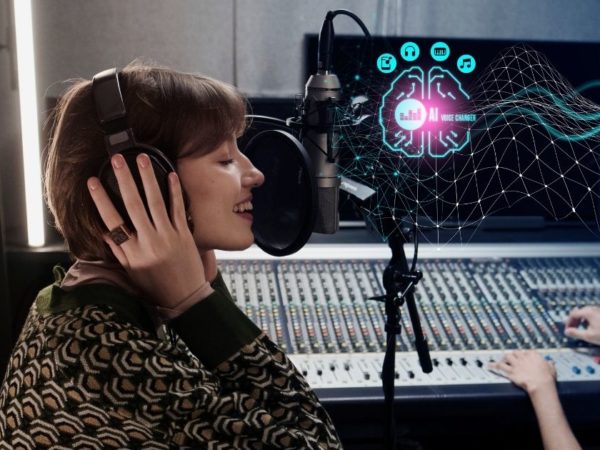Extended Reality is a term that combines physical and digital worlds to interact with each other.
XR came into the picture when developers and companies developed and used virtual and augmented reality. XR is an umbrella term that incorporates all immersive technologies like VR, AR, and MR, as well as the ones yet to be developed.
What is Extended Reality (XR)?
All three, Virtual Reality, Mixed Reality, and Augmented Reality, are Extended Reality’s pillars. It combines the core features of each one of them. XR technology is used to combine the real with a digital world that is able to interact with each other.
Extended Reality technology is being widely used by various verticals and business operations as it helps eliminate distance barriers. These technologies increase user engagement. They develop a new reality that helps them gain new knowledge they might not get using their eyes, imagination, and intelligence.
#1. Virtual Reality (VR)
Virtual Reality allows humans to transform into a reality entirely different from the real world. VR can replicate the real world and can allow users to experience the virtual world completely.
Virtual Reality is enabled by specific headsets and involves all five senses, including visual, smell, touch, and taste. A VR device provides an environment with realistic sound and images.
VR allows users to experience new and interesting things and visit places they can’t physically be at that specific time. Virtual Reality is widely used in the gaming and entertainment industry and for training employees.
#2. Mixed Reality (MR)
Mixed reality is where both virtual and real worlds meet and create a new environment. In mixed reality, real-world and virtual objects can come together and interact in real-time. It combines the best attributes of both worlds. The MR devices are more expensive than VR devices and more powerful too.
#3. Augmented Reality (AR)
Augmented Reality creates an illusion in the real world. Unlike VR, it does not create any virtual world but rather augments the real world with graphics, video, sounds, or other data using AR devices.
AR creates imagination or illusion on top of our physical environment as it just adds some attributes instead of changing them completely.
Extended Reality vs. Augmented Reality
| Extended Reality | Augmented Reality |
| XR is an umbrella term that combines the experiences of Augmented Reality, Virtual Reality, and Mixed Reality. | AR augments the physical world by replacing some parts with virtual objects. |
| XR combines the physical and real world together to provide users with amazing experiences. | AR creates an illusion in the real world. |
| XR blurs the line between the physical world and the virtual world. | AR is not as immersive. |
| XR is all three VR, MR, and AR combined. | AR is not XR. |
Pros and Cons of Extended Reality
Advantages of XR Technology
- XR technology provides the provision of unusual expressions. It allows users to experience the possibility of visiting places without leaving the house, city, or even country.
- XR technology can help in safety training for those who practice in high-risk conditions. Chemists or the military can train safely using the devices away from risky classrooms.
- The technology allows its users to be trained in a more effective manner by providing them with a more realistic view of their subject matter.
- XR technology allows seamless data access, removing any distance barrier.
Disadvantages of XR Technology
- One of the disadvantages of XR technology is being prone to cyber-attacks and data hacks which can leak tons of private information.
- Long-term use of XR devices may cause physical harm like eye disorders, nausea, faintness, and headache.
- The development and implementation of XR devices are extremely expensive.
- ER technology provides entertainment to users but, on the other hand, can also cause reduced social engagement and personal interaction.
Use Cases of Extended Reality
XR has a wide range of applications in the modern world, and the following are some of them:
Entertainment
The Entertainment and gaming industry is one of the most crucial users of XR technology. 34% of XR users account for the entertainment and gaming industry. That’s why the business focuses on providing user experience for their success.
In movie theaters, XR technologies are used to provide users with amazing 3D experiences. Events such as concerts, exhibitions, and sports events also use XR technologies.
Extended reality is being widely used in video games due to its all-inclusive participation effect. It allows users to be transported entirely into virtual reality.
Healthcare
Medical practitioners use XR technology to visualize complex medical procedures and also help strengthen patient care. It can assist surgeons in complicated surgeries by enabling them to envision the organs in 3D.
Educating and Training
XR technology can help people who train in high-risk environments, such as chemists and aviation students. With XR devices, aviation students can experience and learn how to fly real planes without the potential of risking any accident being a beginner.
Real Estate
the Real estate sector is using extended reality technology to provide potential buyers with virtual experiences who can’t physically come and visit the place. The buyer or tenant can virtually visit the place and decide if it is perfect for them or not.
Marketing
Extended Reality technology has given companies a new way to interact with their customers with their new products. Companies can allow customers to try their products before using ER devices.
Cathay Pacific has offered a 360-degree video to its customers that allow them to experience its brand beforehand. This marketing strategy has helped the company to increase brand awareness and sales.
Extended Reality Challenges
There are currently three significant challenges faced by companies developing extended reality (XR):
- Cost: Companies developing XR are primarily challenged by cost as the technology is costly. High costs are due to multiple technologies working together and a lot of hardware required to develop XR devices. Due to high costs, common people would not be able to buy XR products which would mean fewer investors would be interested in them.
- Hardware: Developing XR hardware devices require a lot of technologies, software & components, which makes it a difficult task. The hardware should be designed in such a way that it should be robust, compact, and able to process a lot of data very quickly and swiftly.
- Privacy: Privacy is another challenge that comes with extended reality. In order to create an environment according to users’ preferences on XR devices, many private details might be required. Companies need to spend a lot of money to store such data. It also makes users worry about their data privacy.
Trends of Extended Reality
Despite the challenges that Extended Reality is facing currently, the technology is being adopted globally. It is offering a number of new applications to businesses.
XR offers superior training tools and provides improved access to information, enabling users to find data quickly while working with real-life objects. The technology is expected to grow in the years to come.
Projected Growth and Adoption
The pandemic and lockdown have resulted in the rapid development of XR technology, as businesses around the globe were trying to find ways to communicate and collaborate with their geographically dispersed teams.
It has highlighted the potential of XR technology and its capabilities with possibilities like remote working, learning, shopping from home, and many more.
Advances in Hardware
One of the ways to cope with the challenges faced in XR development and implementation is through advances in hardware. With advancements in technology, the hardware gets smaller and thus making the XR device’s adaption a lot smaller and lighter.
Metaverse
Metaverse has three components: a 3D world, Avatars, and Gamification. Users in the metaverse can interact with other users in a virtual space, attend an event, play a game, play live concerts, earn virtual currency, etc. By 2024, this XR universe is expected to reach an $800 billion market valuation.
5G Connectivity
XR technology needs a high-speed network to transfer large volumes of data. 5G connectivity is up to 20 times faster than the current mobile networks and is a crucial development for XR technologies.
5G will help expand XR technologies by eliminating hefty infrastructure investments and the need for expensive computers.
Remote Collaboration
After the pandemic, the remote working culture is growing rapidly worldwide. By enabling remote workers to connect virtually, XR technology can help them collaborate, work, and solve problems by making them feel the same way as if they are working in their offices.
It can require heavy investment at first but can eventually give employee satisfaction and significant ROI for businesses.
Future of Extended Reality
The future of machine-human interaction and digital transformations may be shaped by XR. Also, with the adoption of 5G technology, there will be increased uses and adoption of XR technology.
The future is going to include many complex and advanced XR technologies that will solve various global problems.
Organizations like Meta are working on the metaverse to make it more than just graphic and visual, and add more senses like touch. Just like smartphones and game controllers, these XR devices can also give haptic feedback.
Finally, It would not be a complete surprise to see some type of XR wearable as a future smartphone. XR can leverage mobile computing in order to give out the world experience to its users.
Conclusion
Extended Reality provides amazing benefits to businesses just like the ones we discussed above and many more are on the way. Having said that, XR implementation and development require heavy investment and are a bit too risky. What is important is choosing an XR development company for your business with considerable expertise.
You may also explore the latest Augmented Reality trends, frameworks, and tools.



